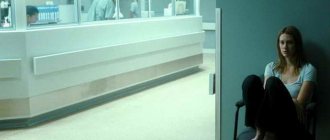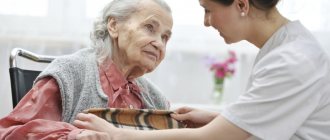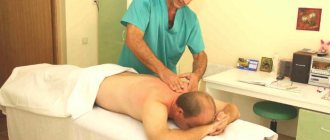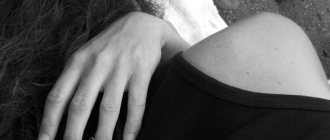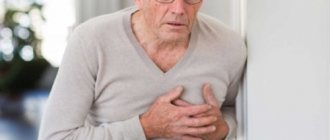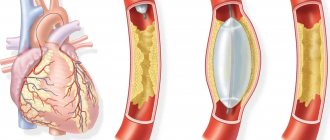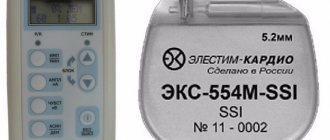What is the right hemisphere responsible for?
The brain is responsible for carrying out all the activities of the central nervous system. The functions of the right hemisphere of the brain include:
- Processes signals that come to us in the form of symbols, gestures, colors and sounds.
- Responsible for the ability to perceive and create objects of art.
- Helps to navigate in space.
- Perceives metaphors, grasps the hidden meaning of words and sentences.
- Development of imagination (dreams, daydreams, fantasies).
- Recognizes and perceives emotions.
- Simultaneously processes a lot of diverse information.
- Face recognition.
- Responsible for the work of the left side of the body.
Speech disorders in left-sided stroke
There is an idea that after a brain stroke on the left, it is necessary to urgently restore speech. But this is not true at all. The first 7 days after a left stroke should be aimed at preserving the person’s life. However, speech disorders cause a lot of discomfort to the patient and make him helpless, which is why so much attention is paid to them. The cerebral cortex is responsible for speech. When it is damaged, speech is paralyzed. The more severe the cortical disorders, the more serious the speech disorders.
First of all, when the cortex is involved in the pathological process, the pronunciation of words is disrupted - this is dysarthria. It can be subcortical, cerebellar, bulbar, which depends on the main location of hemorrhage or necrosis. The reason is a disorder of speech breathing, articulation, intonation - the habitual movement of muscles that give a person the opportunity to speak clearly. In a person who has suffered a stroke, instead of the usual articulation, salivation increases, facial expressions are practically absent, and instead of words, babbling appears, like in babies. At the same time, the patient perceives the speech of others and retains the ability to write and read.
In addition to dysarthria, aphasia develops with a stroke. The cause of this disorder is a lack of nerve impulses that reach the speech center of the brain. In this case, hearing and muscle activity - articulation is preserved, but speech is absent. The type of aphasia also depends on the location of the brain lesion. A speech disorder of this origin can be:
- total, when a person absolutely does not understand what is happening around him;
- motor, when the understanding of what is happening around is preserved, but speech is possible only in the form of individual sounds;
- sensory (Wernicke's aphasia), when the native language is perceived as a foreign language;
- semantic - when the ability to understand synonyms and complex speech patterns is lost, a person thinks and speaks only in simple sentences;
- amnestic, when it is difficult to name familiar objects;
- dynamic, when it is impossible to pronounce a long phrase or construct a sentence plan.
The type of therapy that the patient needs to restore speech depends on the type of aphasia.
Ischemic form of the disease
Let's consider what a right-sided stroke of ischemic form is. In the ischemic form of stroke, aneurysms form, diseases of the arteries (cerebral and carotid), and other pathologies of blood vessels occur. Often accompanied by hemorrhage. Acute and rapid manifestation of symptoms. Nerve cells die within a few minutes.
Causes of appearance in men and women
According to the National Research State University, the causes of ischemic right-sided stroke in men and women differ:
- Men can be affected by a sedentary lifestyle, bad habits, atherosclerosis, and metabolic syndrome.
- The main risk factors in women are obesity, atrial fibrillation, diabetes mellitus, dyslipidemia and use of contraceptives.
Common causes of right-sided stroke in men and women include hypertension.
Important! These factors cause right-sided stroke in people at risk (with the above problems).
Signs and symptoms
The main signs of a right hemisphere cerebral infarction include:
- Increased pressure.
- Disorientation in space and time.
- Nausea and vomiting.
- Severe headaches.
- Speech and vision problems.
- Numbness of hands and fingers.
- Abdominal cramps.
- Lack of sensitivity.
To make sure that the disease has appeared, you need to ask the person to simultaneously raise both hands up or simply smile. With a positive diagnosis, one part of the body will work worse. It should be noted that with stroke of the right hemisphere, the left side of the human body is paralyzed .
Distinctive features
With a stroke of the right lobe of the brain, the functionality of the left side of the body is lost. May be observed:
- lack of response to external stimuli of the left arm and leg;
- hearing loss in the left ear.
But the main feature is anagosia:
- distortion of the patient’s psycho-emotional state;
- lack of reaction to what is happening.
In old age, you may also experience:
- slow thinking;
- decreased memory and attention;
- manifestation of volitional apathy;
- loss of intellectual and emotional expression;
- destruction of the volitional sphere.
Hemorrhagic form
Right-sided hemorrhagic stroke is much more dangerous than ischemic stroke, but it occurs less frequently and only in people with a diseased heart who have suffered a heart attack or primary stroke. It manifests itself with more acute symptoms and more complex consequences.
If medical care is delayed, the patient may fall into a coma or develop cerebral edema. Not only do blood vessels clog with blood clots, but they also rupture. In this case, red blood cells can penetrate the walls of the heart. The process is practically irreversible. Brain hemorrhage, the appearance of aneurysms and lacurnos are also possible.
Want to learn more about stroke types? Read articles from our experts about the causes, signs, consequences and treatment of spinal, brainstem, lacunar and cardioembolic strokes.
Causes of occurrence in men and women
The causes of right-sided hemorrhagic stroke in men and women include:
- Brain injuries resulting in ruptured blood vessels.
- Excessive physical activity.
- Excessive psycho-emotional stress.
Right hemisphere strokes are much more common in men than in women.
Also, predisposing factors for the development of this disease are:
- Alcohol addiction.
- Elderly age.
- Sedentary lifestyle.
- Genetic predisposition to vascular diseases and strokes.
- Constant nervous tension and stress.
- Lack of timely treatment of the endocrine system and vascular diseases.
- Increased cholesterol levels.
- Poor nutrition.
- Diabetes.
- Recent transactions.
Signs and symptoms
The very first signs and symptoms of a hemorrhagic stroke of the right hemisphere are:
- Sudden severe weakness.
- Numbness of fingers.
- Nausea for no apparent reason.
- Frequent headaches with inability to determine its location.
- Noises in the head.
- Deterioration of vision.
- Speech impairment.
- Difficulty breathing.
- Impaired movement coordination.
- Complete numbness of one of the left parts of the body.
Consequences
The consequences of a right-sided stroke are quite complex. When the right hemisphere of the brain is damaged, all its functions are lost for an indefinite period. The duration of this condition will depend on the timeliness of assistance, the severity of the attack, the type of stroke and treatment.
Possible complications of right-sided stroke include hemiparesis and paralysis, as well as other conditions of the body. Let's look at them in more detail:
- Speech impairment.
- Complete or partial paralysis of the left side of the body, formation of bedsores.
- Lack of language memory.
- Cautious and slow behavior.
- Brain swelling.
- Epileptic seizures.
- Accumulation of mucus and bacteria in the respiratory tract, resulting in pneumonia and tuberculosis.
- Diseases of the genitourinary system.
- Impaired vision and vestibular apparatus.
- Repeated stroke.
- Heart attack.
- Disability.
- Death.
Some people who have had a severe right-sided stroke develop dementia.
Diagnosis of the condition
General and special diagnosis of right-sided stroke is carried out using laboratory and instrumental research methods. Against the background of typical complaints, the doctor examines the results:
- general clinical analysis of blood and urine, as well as individual biochemical tests, coagulogram and lipidogram;
- MRI and CT examination (especially if an ischemic type of process is suspected);
- electrocardiography;
- ultrasound examinations;
- X-ray of bone structures;
- neuroimaging.
Features of treatment of right-sided stroke
Treatment after a right-sided stroke is prescribed by a doctor after diagnosing the patient.
Therapy depends on the severity of the pathology and the type of disease. Basically, treatment is carried out with the help of medications . In rare cases, it is necessary to resort to surgical intervention.
For ischemic right-sided stroke, the following drugs are used for treatment:
- Thrombolytic. Blood clots dissolve.
- Anticoagulants. Thin the blood.
- Antiaggregants. Prevents the formation of blood clots.
- Nootropics. Restores the functionality of nerve cells.
For hemorrhagic stroke of the right hemisphere, the following is used:
- Medicines that lower blood pressure.
- Medicines that restore heart rhythm.
- Anticonvulsants.
- Antibacterial therapy. To prevent infection.
If, during a hemorrhagic right-sided stroke, a large hemorrhage occurs in the brain and intracranial pressure increases rapidly, surgical intervention cannot be ruled out.
Folk remedies
After suffering a right-sided stroke, during traditional medical treatment you can also resort to auxiliary means - traditional medicine. But before choosing traditional recipes, you should consult your doctor and get approval.
The main folk recipes include:
- A mixture of onion juice (onions) and natural honey in a 1:1 ratio. Take 1 tablespoon on an empty stomach.
- Alcoholic spruce tincture. 5-7 fir cones are poured with a bottle of vodka and left in a dark place for a week. Drink 3 times a day, 1 tsp.
- Pine-lemon decoction. Boil 10 tablespoons of chopped pine needles in 1 liter of water for 15 minutes. Strain and add one finely chopped lemon. Leave until completely cooled. Take half a glass three times a day.
Rehabilitation and recovery
Rehabilitation is necessary to restore normal functioning of organs.
Rehabilitation is carried out in special medical institutions. After suffering an ischemic right-sided stroke, the patient’s recovery is more successful and many of them manage to regain lost functions. Whereas after a hemorrhagic stroke, rehabilitation rarely has a positive effect on the patient’s body and people often become disabled.
Lifestyle
Life after a stroke on the right side will not change dramatically. Unless your health becomes more vulnerable. Without medications, it will become difficult to survive migraines, stress and hypertension. It will be necessary to adhere to such measures as:
- Diet.
- Massage and physiotherapy.
- Exercise therapy.
- Swimming.
- Rejection of bad habits.
- Limitation of physical and nervous activity.
- Development of joints.
- Treatment of chronic diseases.
- Complete peace and protection from stress.
Exercises for paralysis of the left half of the body
Physical exercises should begin immediately after the patient’s general condition has stabilized. At the beginning, gymnastics is performed in a lying position with the help of third parties.
For example, bending and straightening the arms and legs, changing the positions of the fingers. Once the patient is able to stand, the exercises can be done in a standing position.
Attention! The intensity of physical activity depends entirely on the patient's condition.
How to recover
Recovery after a stroke occurs in several stages. Rehabilitation is necessary - during this period, all vital functions lost after the stroke are restored. To speed up recovery, patients need to go to a specialized center. Rehabilitation consists of 3 periods:
- early (up to 6 months);
- late (from 6 to 12 months);
- residual (from 12 months).
Important information: TOP 5 home exercise equipment for rehabilitation and recovery of fingers (toes) after a stroke
Each stage of recovery must be accompanied by therapeutic physical training. Special exercises help develop paralyzed limbs. Speech and psycho-emotional state are restored under the supervision of specialists - a speech therapist and a psychotherapist.
Forecast
Regarding prognosis, after a right-sided stroke, life expectancy decreases to an average of 6 years, especially in women after fifty years of age. For men 45 years old, a stroke on the right side can have more severe consequences, often fatal.
The prognosis after a right-sided ischemic stroke depends on the size of the affected area of the brain. Full recovery is possible in cases of timely relief of the attack and non-critical amounts of tissue ischemia. In more difficult situations, for example, if the entire left half of the body is paralyzed, the prognosis is less favorable, complete rehabilitation will not be possible, but it is possible to return at least part of the lost functions.
With hemorrhagic stroke of the right hemisphere, the prognosis is often unfavorable. Mostly, patients die either immediately after the attack or within a few days. The survivors remain disabled. Most functions cannot be restored.
First aid rules
Of course, providing first aid to a person begins with calling an emergency team, but 15-20 minutes will pass before its arrival - this is valuable time for a person in critical condition. Correctly provided support will help save a person’s life, because sometimes it happens that doctors simply do not have time to get to the victim.
Attention! The person providing resuscitation measures must calm down, act clearly and harmoniously. This is important, because the victim, who notices anxiety in his work, will become worried.
The algorithm for providing first aid to a person with a stroke looks like this:
- Reassure the patient if he is conscious. Explain that unnecessary worry can make the situation worse.
- Assess his condition, paying attention to consciousness, pulse characteristics and heartbeat.
- Feel the pulse on the carotid artery, control your breathing by movements of the chest. If possible, measure your blood pressure with a tonometer and record the readings. Determine the reaction of the pupils to light.
- If the tests are negative, the pulse is absent or muffled, breathing cannot be traced, as well as the heartbeat, cardiopulmonary resuscitation must be started. Artificial mouth-to-nose respiration is indicated.
- After spontaneous breathing has been restored, place the victim on his side. You need to make the body position stable by placing pillows.
In most cases, signs of a stroke increase gradually. It can take up to 6 hours from the moment the first symptoms, such as double vision, appear. If assistance is provided in this time range, the consequences of a stroke on the right side will not be critical for the victim. This time decreases for older people, since their ability to recover is minimal.




